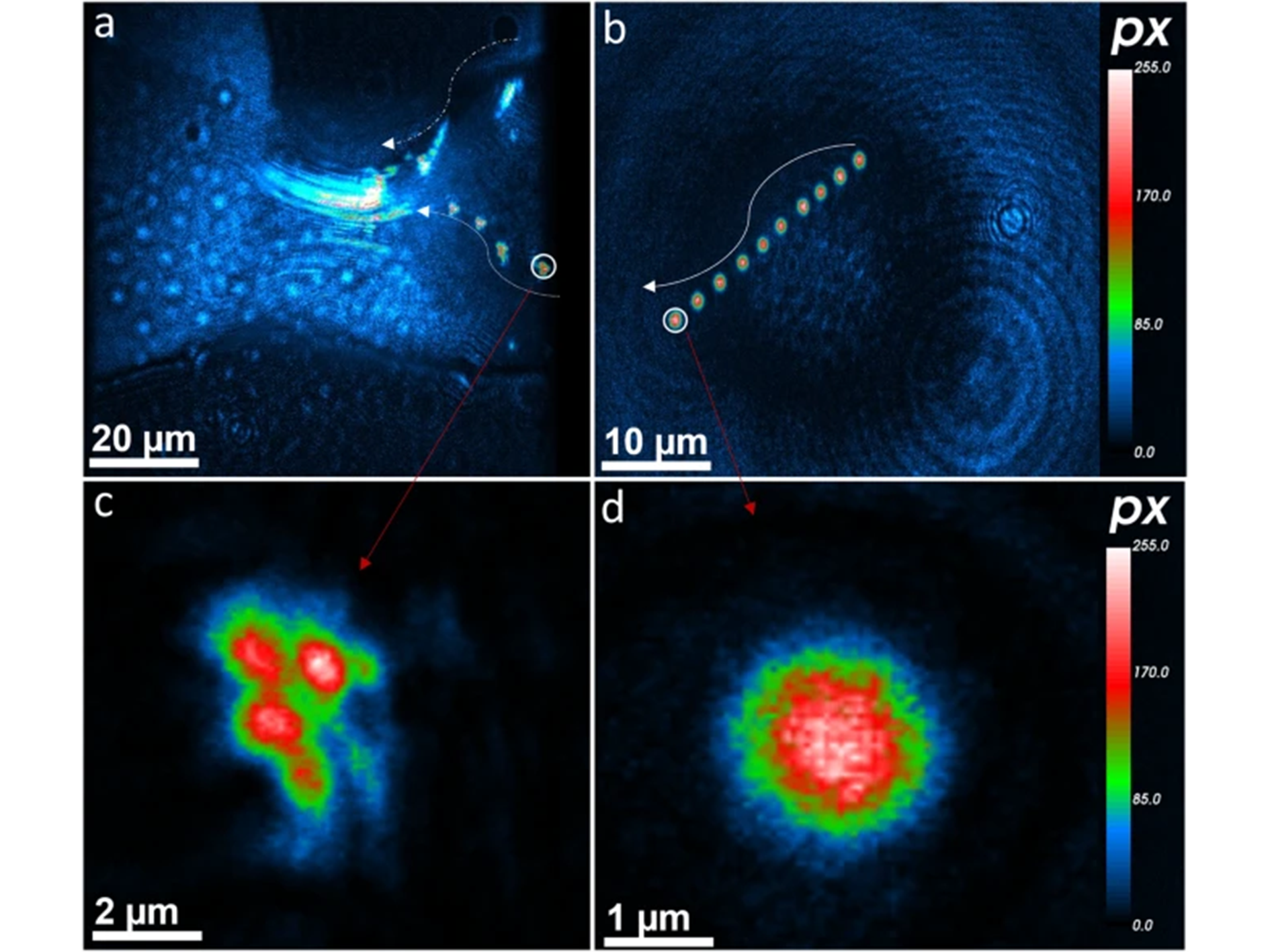Four years ago, the COVID-19 pandemic took the world by surprise. From the way people interacted, to the way they learned and worked, society changed in fundamental ways, and we are still processing the impact. One outcome was the increased concern about the air we breathe and the particles we inhale on a day-to-day basis. Before the advent of masks and social distancing, little thought was given to the air that surrounds us.
McGill University Professor Parisa Ariya, of the department of Chemistry and of Atmospheric and Oceanic Sciences, had been working on measuring particles in the air in relation to the fight against climate change. But when COVID-19 hit, Ariya’s PhD student, Devandra Pal, investigated how to detect airborne pathogens using a novel, McGill-developed technology: the nano-digital inline holographic microscope or nano-DIHM for short.
The result is Patholyzer, a smaller portable version of the nano-DIHM used for diagnostic, identification and measurements of pathogens.
Patholyzer: detection in milliiseconds
“The Patholyzer is made up of two components, a laser and a camera,” explained Pal. “Interactions between pathogens and the laser get recorded on the screen. While you can’t see anything with the naked eye, we are working on developing a numerical reconstruction mechanism using artificial intelligence that can instantly identify pathogens. The end result will be a tool that is able to identify and classify pathogens instantly and automatically.”
The Patholyzer can be used to detect pathogens more effectively than any other technology currently available as it does not require any sample collection or processing and can render results in milliseconds.
“PCR is fantastic, but it is not in real time,” noted Professor Ariya. “It requires the collection, transport and processing of samples which takes time and expertise. We are able to automatically – in milliseconds and in-situ – track airborne pathogens.”
A tool to fight Antimicrobial Resistance
This detection technology has enormous potential in the fight against Antimicrobial Resistance (AMR), and the Patholyzer team is supported by both the McGill Innovation Fund (MIF) and the McGill AMR Centre as they navigate their journey out of the laboratory and into the commercial space. Patholyzer earned the Discover level of support from the MIF, receiving $50,000 in funding. They received an additional $50,000 from the AMR centre, and will be mentored by experts from both organizations as they aim to bring the technology to the market.
AMR is the ability of microorganisms, such as bacteria and viruses, to persist in the presence of drugs designed to destroy them. AMR is accelerated by human use of antimicrobials in preventing or treating infections in people, animals and the environment. Indeed, the acceleration of this phenomenon is why AMR has been predicted to become one of the world’s leading causes of death by 2050, with an estimated impact on the global economy of $100 trillion.
“There are many different applications where we want to monitor the presence or absence of microbes for the safety of patients, the safety of the population or the safety of certain industrial processes, such as drug discovery,” explained Dr. Dao Nguyen founder and director of McGill AMR centre. “We are hoping that with the additional support of the AMR centre they have the resources to look at the broader applications of this technology and discover promising applications for the fight against AMR.”
The future is small
In the next twelve months, with the combined support of the MIF and the AMR centre, the team aim to miniaturise the device into a portable prototype that can be tested. They will also be working creating a library of classifiers with pure pathogens using AI.
“We are working to make the device even smaller, to make it accessible to more people and more places,” said Prof. Parisa Ariya. “That’s why the support of the MIF and the AMR is very important because it enables the acceleration of the translation of very promising research into a commercial system.”
The technology used by the Patholyzer also has applications beyond its use in the fight against AMR.
“What’s great about the technology is that it’s effectively a microscope that can be used in all three mediums,” explained Robert Panetta, who works as a senior research associate at the Ariya laboratory. “It’s a general purpose research tool that allows us to probe how things look, and see how they’re interacting with each other in a physical manner.”
The Ariya laboratory has been working on adapting the nano-DIHM for a myriad of purposes, including environmental monitoring. Projects at the lab include using it to detect micro-nanoplastics in the snow on McGill campus and quantifying black carbon in the air. Their technology is the world’s first real-time microscope, and they are hopeful that it can contribute to solving pressing issues in fields ranging anywhere from climate change to genomic medicine.

